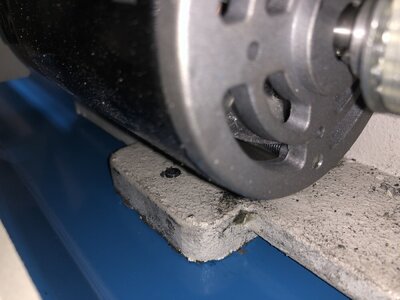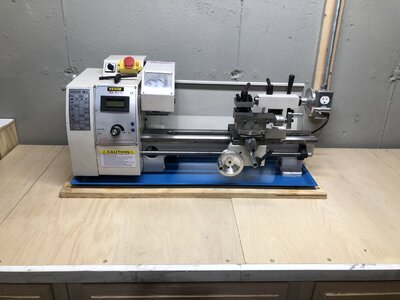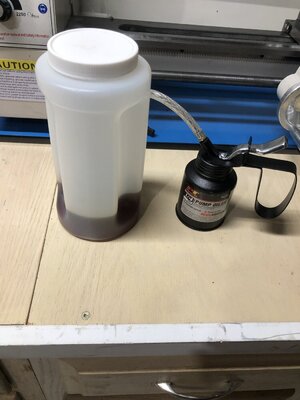- Joined
- Nov 4, 2021
- Messages
- 301
- Points
- 168

When I introduced my latest acquisition in the "new to your shop" thread I was asked to provide a review of the Vevor 7 x 14 lathe, being as it seems to have received mixed reviews online. Although I shared some initial impressions in that thread, I knew it was going to be a slow process for me to get going with this tool so rather than hijack that discussion, I figured I would start a new thread and approach it similarly to a build log.

First things first: There were a couple of reasons I chose the Vevor over other models I saw online. One was that the price was a bit better than most. When searching around online it seems like the different options are all pretty much identical with a different label slapped on them, so I figured quality would be roughly equivalent across the board. Maybe a bad assumption; perhaps I'll never know. Also, the Vevor came with steel gears, rather than the nylon gears on many other models. I know nylon gears have their advantages, so just chalk this up to me being old school. The Vevor also came with a full set of cutting tools. I'm sure I'll acquire more over time, but these give me something to start practicing with.
I will also point out that I suspect that some of the negative reviews on this machine may have been provided by those who expected too much for what they paid, since for the most part this looks to be a very solid and tight machine on first inspection.
Here's what I've already shared on the other thread:
- Fedex seems to have done their best to test the durability of this machine. I guess the delay in delivery was a result of them giving it a thorough going-over in some darkened back room with the lathe tied to a chair.
-The amount of overspray on unpainted parts leads me to think the bed and covers were painted after the entire thing was assembled. Should be only cosmetic, but calls into question the overall production process
-Looks like someone used a pipe wrench on the lead screw. The saddle ran rather rough initially in autofeed, but seems to have smoothed out after a few passes back and forth.
-The operators manual is a huge disappointment: 1 page for the cover, 1 page for mandatory safety warnings, 1 page for specs table, and 1 page in two sections with pictures on how to turn the machine on and how to turn it off. That’s it.
the solution to the last problem was to acquire a copy of The Mini-Lathe (Crowood Metalworking Guides) by Neil M Wyatt. Immensely informative and much more up-to-date than some of the other references out there.
Next update I'll get into mounting and prepping the lathe.
First things first: There were a couple of reasons I chose the Vevor over other models I saw online. One was that the price was a bit better than most. When searching around online it seems like the different options are all pretty much identical with a different label slapped on them, so I figured quality would be roughly equivalent across the board. Maybe a bad assumption; perhaps I'll never know. Also, the Vevor came with steel gears, rather than the nylon gears on many other models. I know nylon gears have their advantages, so just chalk this up to me being old school. The Vevor also came with a full set of cutting tools. I'm sure I'll acquire more over time, but these give me something to start practicing with.
I will also point out that I suspect that some of the negative reviews on this machine may have been provided by those who expected too much for what they paid, since for the most part this looks to be a very solid and tight machine on first inspection.
Here's what I've already shared on the other thread:
- Fedex seems to have done their best to test the durability of this machine. I guess the delay in delivery was a result of them giving it a thorough going-over in some darkened back room with the lathe tied to a chair.
-The amount of overspray on unpainted parts leads me to think the bed and covers were painted after the entire thing was assembled. Should be only cosmetic, but calls into question the overall production process
-Looks like someone used a pipe wrench on the lead screw. The saddle ran rather rough initially in autofeed, but seems to have smoothed out after a few passes back and forth.
-The operators manual is a huge disappointment: 1 page for the cover, 1 page for mandatory safety warnings, 1 page for specs table, and 1 page in two sections with pictures on how to turn the machine on and how to turn it off. That’s it.
the solution to the last problem was to acquire a copy of The Mini-Lathe (Crowood Metalworking Guides) by Neil M Wyatt. Immensely informative and much more up-to-date than some of the other references out there.
Next update I'll get into mounting and prepping the lathe.








